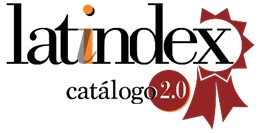Design of a contextualized situation for early introduction of functional thinking
DOI:
https://doi.org/10.48489/quadrante.23602Keywords:
design-based research, functional thinking, elementary education, models and modelingAbstract
This article documents the design process of a Model Eliciting Activity (MEA), contextualized in a situation aimed to engage elementary students in the creation of security codes to develop the notion of function by establishing a correspondence rule between two sets (letters and numbers). The Models and Modeling Perspective (PMM) pedagogic approach guided the MEA design and refinement. Based on a design-based research methodology, two iterative cycles were conducted to design and refine the MEA. The first cycle was implemented with 8 teachers, and the second with 21 elementary students (11 years old). The analysis of the design process was based on the PMM pedagogical principles, the emergent participants’ models and the teachers’ feedback. The teachers’ feedback helped to anticipate possible solutions that elementary students could develop, and the participants’ models provided information about the affordances of the MEA to introduce the notion of function in early school grade levels.
References
Abassian, A., Safi, F., Bush, S., & Bostic, J. (2020). Five different perspectives on mathematical modeling in mathematics education, Investigations in Mathematics Learning, 12(1), 53-65. https://doi.org/10.1080/19477503.2019.1595360
Amerom, B. A. (2002). Reinvention of Early Algebra: Developmental research on the transition from Arithmetic to Algebra. CD-[β] Press, Center for Science and Mathematics Education.
Brady, C., Eames, C., & Lesh, D. (2015). Connecting real-world and in-school problem-solving experiences. Quadrante, 24 (2), 5-38. https://doi.org/10.48489/quadrante.22924
Butto, C., & Rojano, T. (2004). Introducción temprana al pensamiento algebraico: Abordaje basado en la geometría. Educación Matemática, 16(1), 113-148.
Carlson, M. A., Wickstrom, M. H., Burroughs, E. A., & Fulton, E. W. (2016). A case for mathematical modeling in the elementary school classroom. In C. R. Hirsch & A. R. McDuffie (Eds.), Annual perspectives in mathematics education: Mathematical modeling and modeling mathematics (pp. 121-130). Reston, VA: NCTM.
Cañadas, M. C., & Molina, M. (2016). Una aproximación al marco conceptual y principales antecedentes del pensamiento funcional en las primeras edades. In E. Castro, E. Castro, J. L. Lupiáñez, J. F. Ruíz, & M. Torralbo (Eds.), Investigación en Educación Matemática. Homenaje a Luis Rico (pp. 209-218). Granada, España: Comares.
Centro de Investigación en Matemáticas (2020). Laboratorio de Enseñanza de las Matemáticas. Programa Nacional de Investigación e Incidencia en Enseñanza de las Matemáticas. CIMAT, Guanajuato, México.
Cobb, P., & Gravemeijer, K. (2008). Experimenting to support and understand learning processes. In A. E. Kelly & R. A. Lesh (Eds.), Handbook of design research methods in education innovations in science, technology, engineering and mathematics learning and teaching (pp. 68-95). Routledge, Taylor & Francis Group. https://doi.org/10.4324/9781315759593
Cobb, P., Stephan, M., McClain, K., & Gravemeijer, K. (2001). Participating in classroom mathematical practices. The Journal of the Learning Sciences, 10(1-2), 113-163. https://doi.org/10.1207/S15327809JLS10-1-2_6
Confrey, J., & Smith, E. (1991). A framework for functions: Prototypes, multiple representations, and transformations. In R. G. Underhill (Ed.), Proceedings of the 13th Annual Meeting North American Chapter of the International Group for the Psychology of Mathematics Education (pp. 57-63). Blacksburg, Virginia, VA: Conference Committee.
Confrey, J., & Smith, E. (1994). Exponential functions, rates of change, and the multiplicative unit. Educational Studies in Mathematics, 26(2), 135-164. https://doi.org/10.1007/bf01273661
Doerr, H. (2016). Designing sequences of model development tasks. In C. Hirsch & A. Roth (Eds.), Annual perspectives in mathematics education 2016: Mathematical modeling and modeling mathematics (pp. 197-206). Reston, VA: NCTM.
English, L., & Gainsburg, J. (2016). Problem solving in a 21st-century mathematics curriculum. In L. D. English, & D. Kirshner (Eds.), Handbook of international research in mathematics education (pp. 313-335). USA: Routledge. https://doi-org.libweb.lib.utsa.edu/10.4324/9780203448946
Goldin-Meadow, S., Wagner-Cook, S., & Mitchell, Z. A. (2009). Gesturing gives children new ideas about math. Psychological Science, 20(3), 267-272. https://doi.org/10.1111/j.1467-9280.2009.02297.x
Hirsch, C. R., & McDuffie, A. R. (2016). Annual perspectives in mathematics education 2016: Mathemat¬ical modeling and modeling mathematics. Reston, VA: NCTM.
Lesh, R., Cramer, K., Doer, H., Post, T., & Zawojewsky, J. (2003). Model development sequences. In R. Lesh, & H. Doerr (Eds.), Beyond constructivism: Models and modeling perspectives on mathematics problem solving, learning, and teaching (pp. 35-58). Mahwah, NJ: Lawrence Erlbaum Associates, Inc. https://doi-org.libweb.lib.utsa.edu/10.4324/9781410607713
Lesh, R., & Doerr, H. M. (2003). Foundations of a models and modeling perspective on mathematics teaching, learning and problem solving. In R. Lesh & H. M. Doerr (Eds.), Beyond constructivism: Models and modeling perspectives on mathematics problem solving (pp. 3-34). USA: Lawrence Erlbaum Associates, Inc. https://doi-org.libweb.lib.utsa.edu/10.4324/9781410607713
Lesh, R., Hoover, M., Hole, B., Kelly, A., & Post, T. (2000). Principles for developing thought-revealing activities for students and teachers. In A. Kelly & R. Lesh (Eds.), Handbook of research design in mathematics and science education (pp. 591-645). Mahwah, New Jersey: Lawrence Erlbaum Associates. https://doi.org/10.4324/9781410602725
Miles, M. B., Huberman, A. M., & Saldaña, J. (2014). Qualitative data analysis: A methods sourcebook (3rd ed.). Thousand Oaks: SAGE.
Morales, R., Cañadas, M. C., Brizuela, B. M., & Gómez, P. (2018). Relaciones funcionales y estrategias de alumnos de primero de Educación Primaria en un contexto funcional. Enseñanza de las Ciencias, 36(3), 59-78. https://doi.org/10.5565/rev/ensciencias.2472
Revina, S., & Leung, F. K. S. (2018). Educational borrowing and mathematics curriculum: Realistic Mathematics Education in Dutch and Indonesian curriculum. International Journal on Emerging Mathematics Education, 2(1), 1-16. https://dx.doi.org/10.12928/ijeme.v2i1.8025
Secretaría de Educación Pública. (2017). Aprendizajes clave para la educación integral. Educación Primaria. 6° Plan y programas de estudio, orientaciones didácticas y sugerencias de evaluación. Ciudad de México: Secretaría de Educación Pública.
Stephens, A. C., Fonger, N., Strachota, S., Isler, I., Blanton, M., Knuth, E., & Gardener, A. M. (2017). A learning progression for elementary students’ functional thinking. Mathematical Thinking and Learning, 19(3), 143-166. https://doi.org/10.1080/10986065.2017.1328636
Stylianides, A. J., & Stylianides, G. J. (2008). Studying the classroom implementation of tasks: High-level mathematical tasks embedded in 'real-life' contexts. Teaching and Teacher Education, 24(4), 859-875. https://doi.org/10.1016/j.tate.2007.11.015
Swan, M. (2014). Design research in mathematics education. In S. Lerman (Ed.), Encyclopedia of mathematics education (pp. 148-152). Springer. https://doi.org/10.1007/978-94-007-4978-8
The Design-Based Research Collective (2003). Design-based research: An emerging paradigm for educational inquiry. Educational Researcher, 32(1), 5-8. https://doi.org/10.3102%2F0013189X032001005










